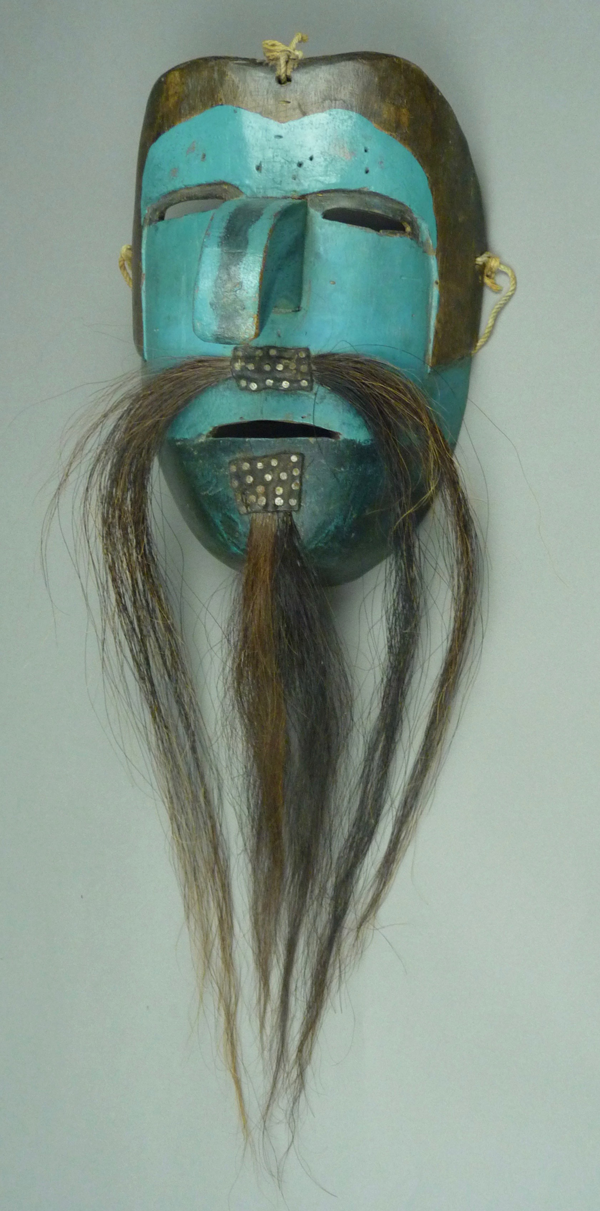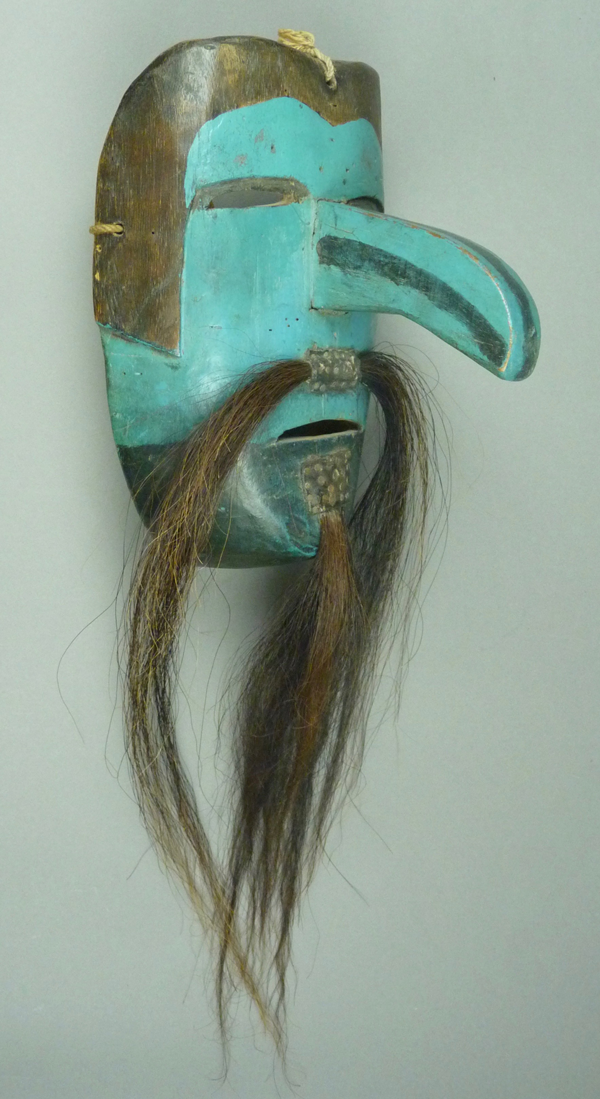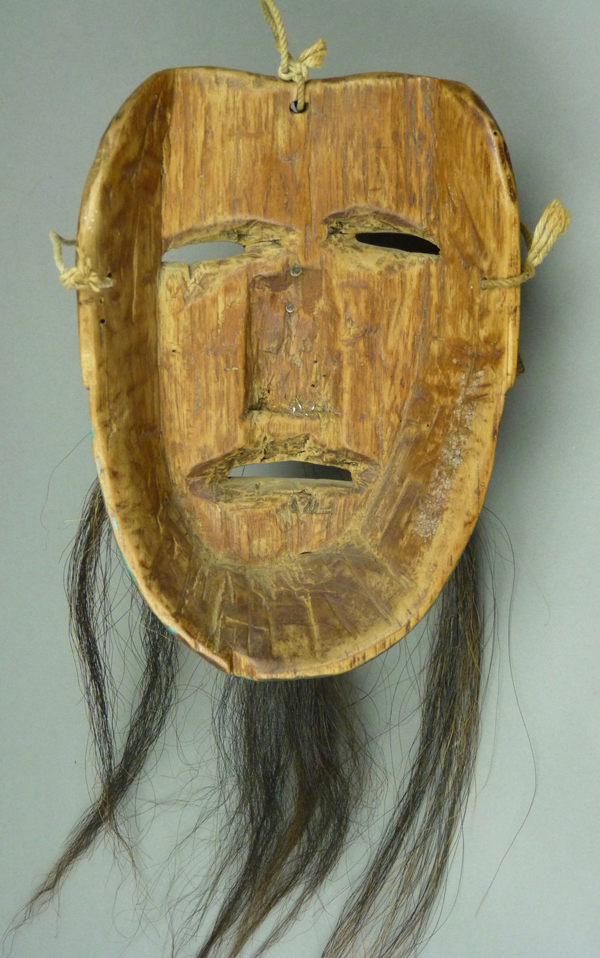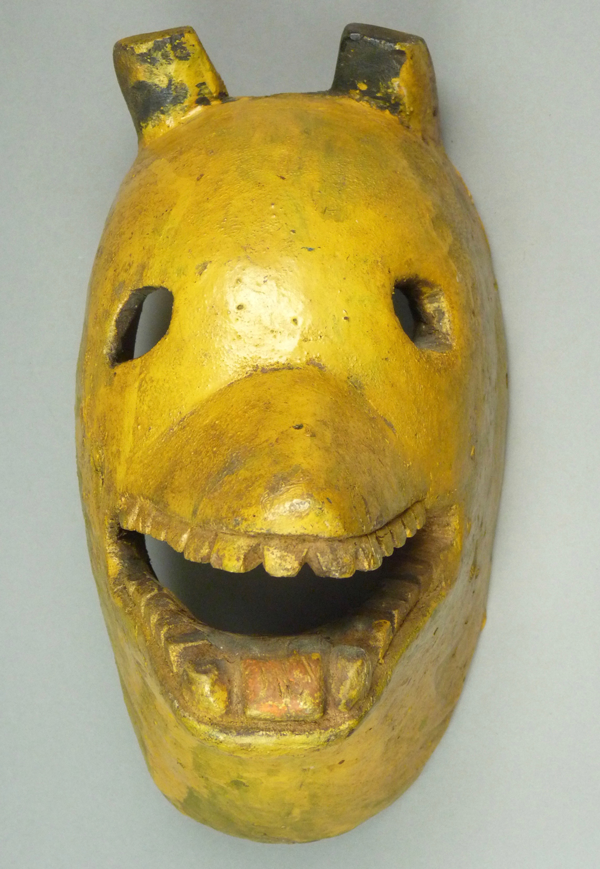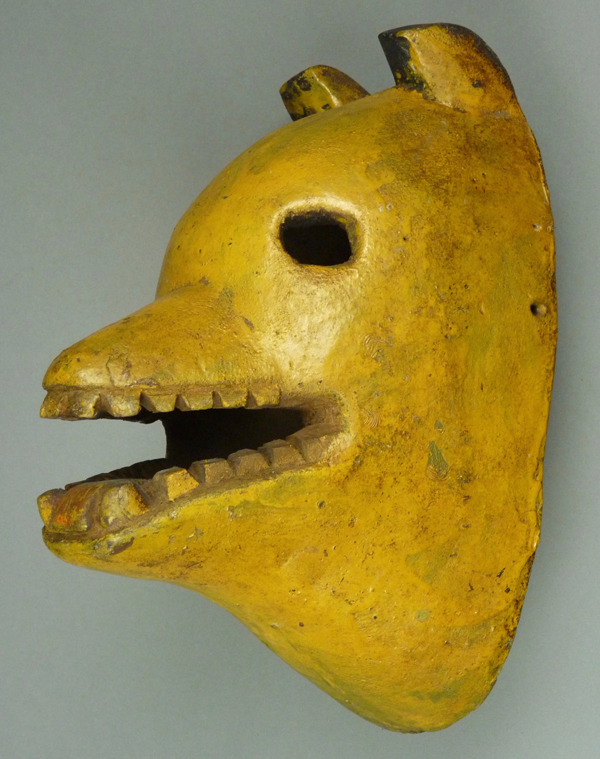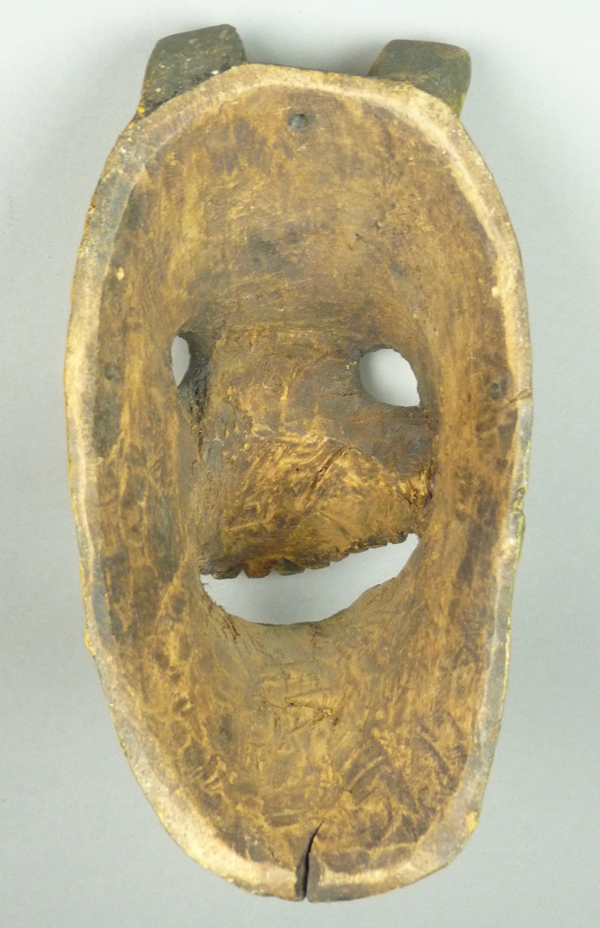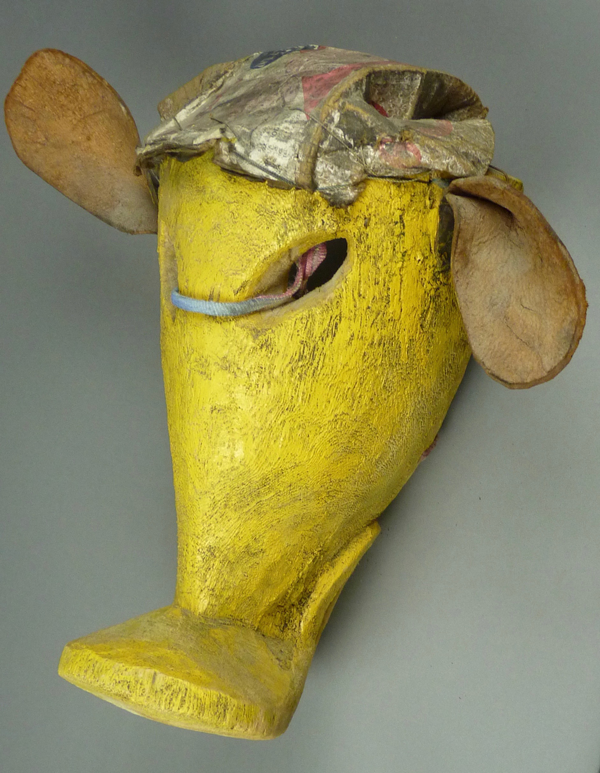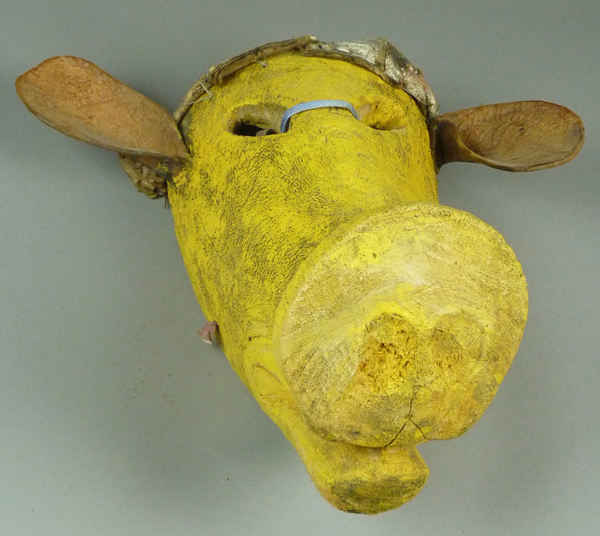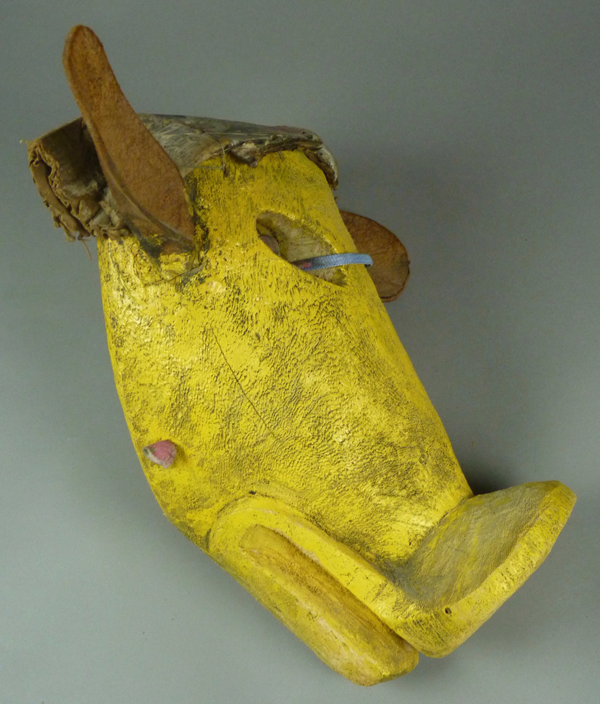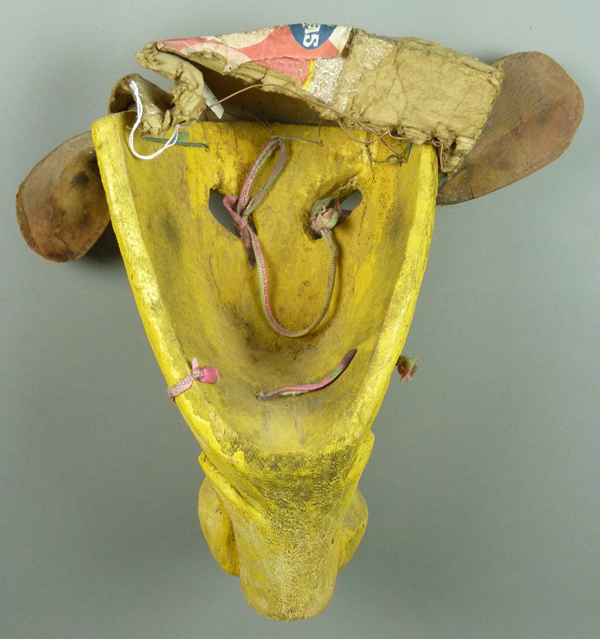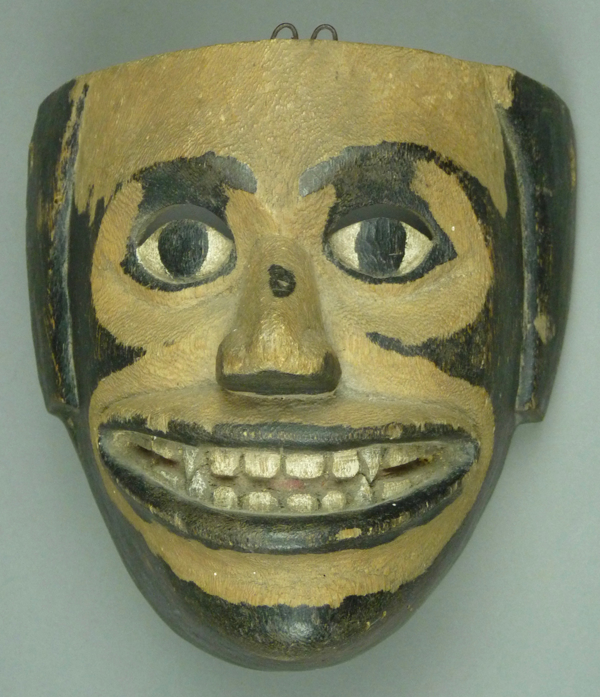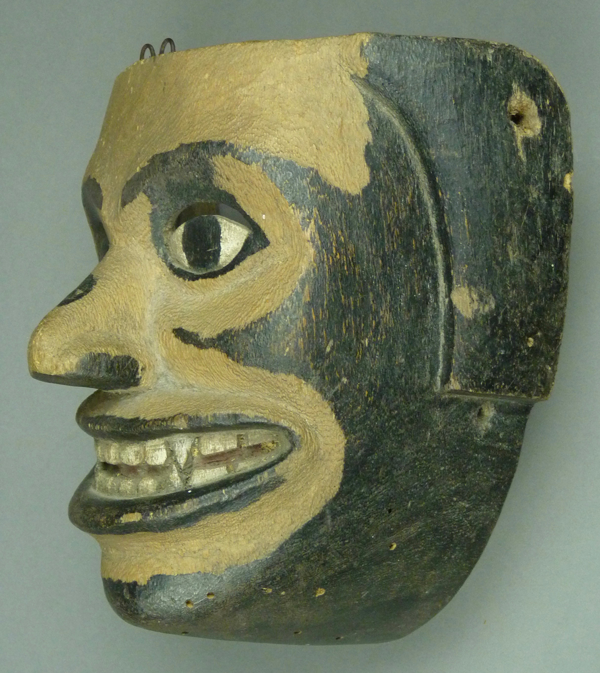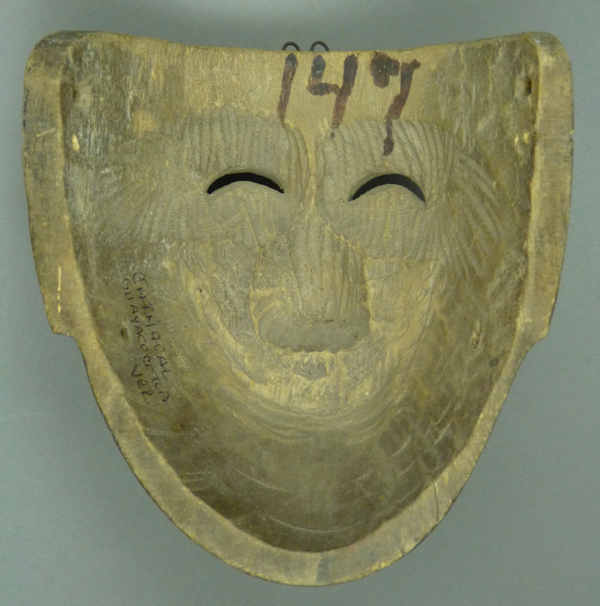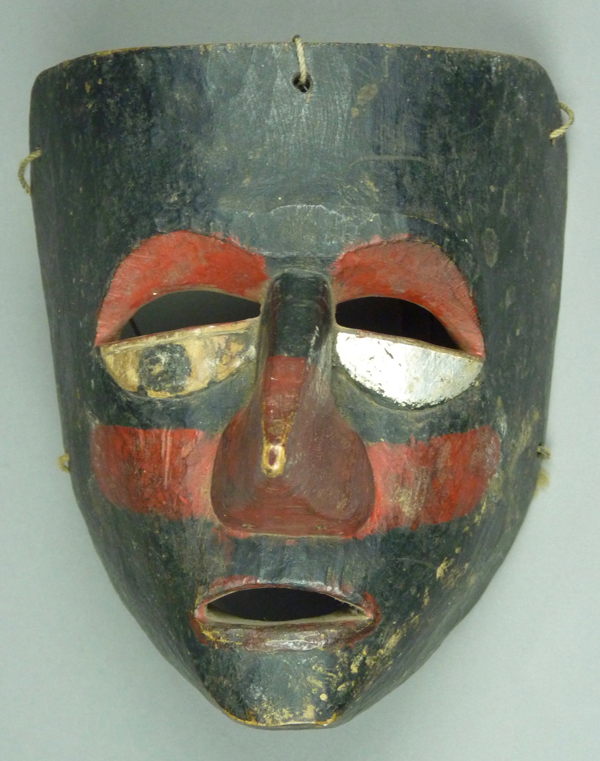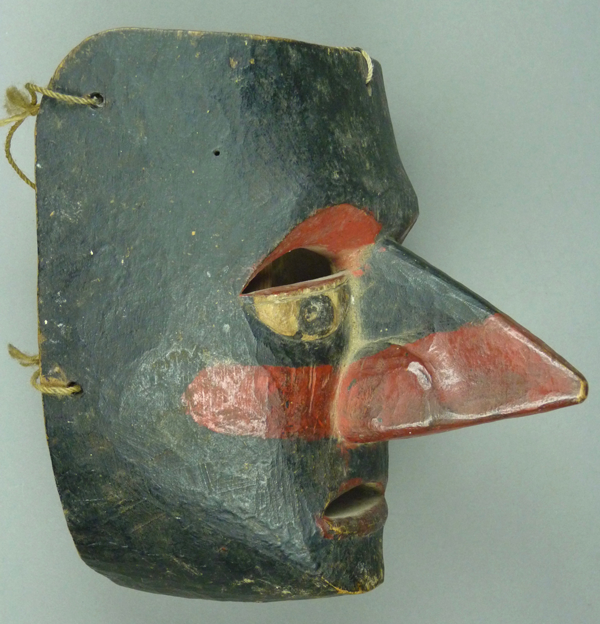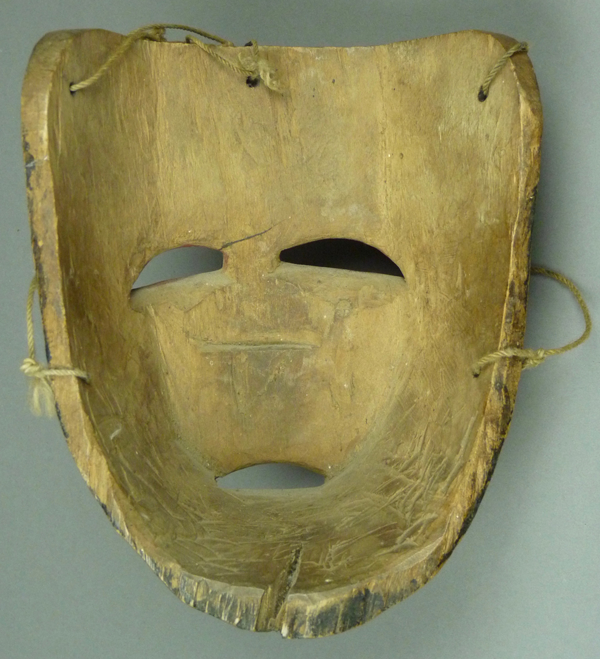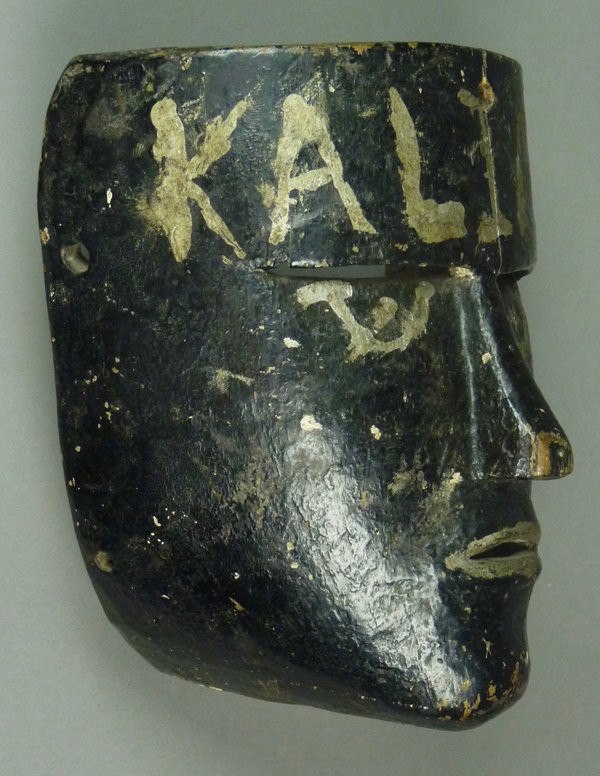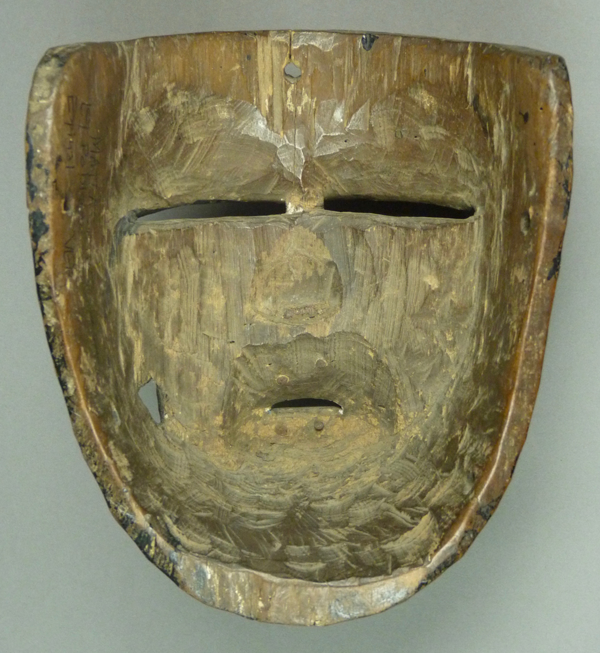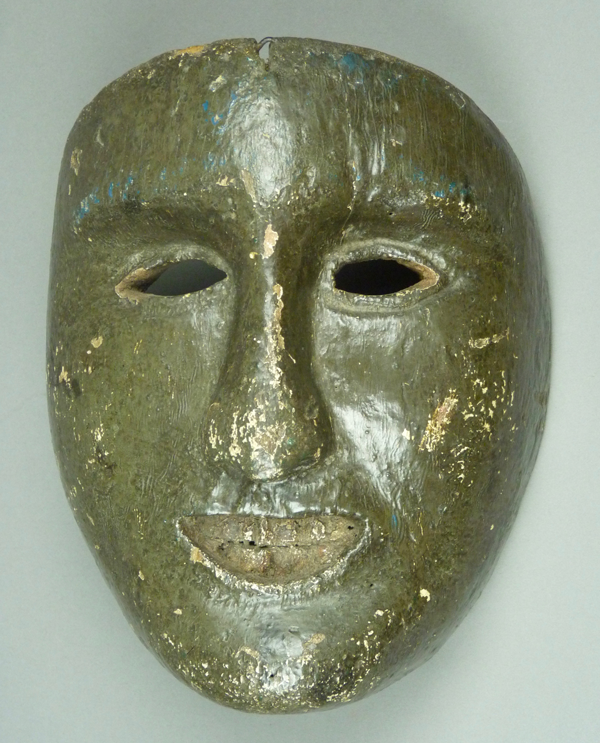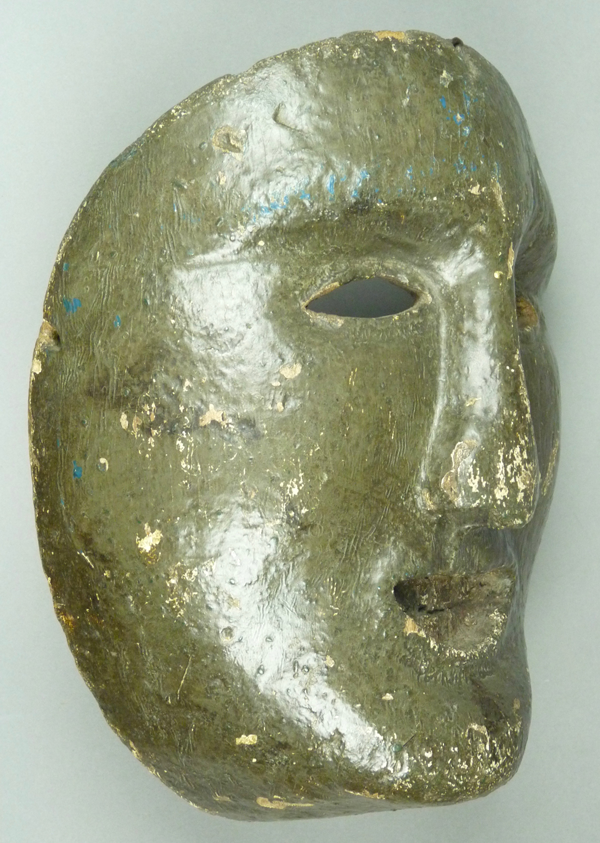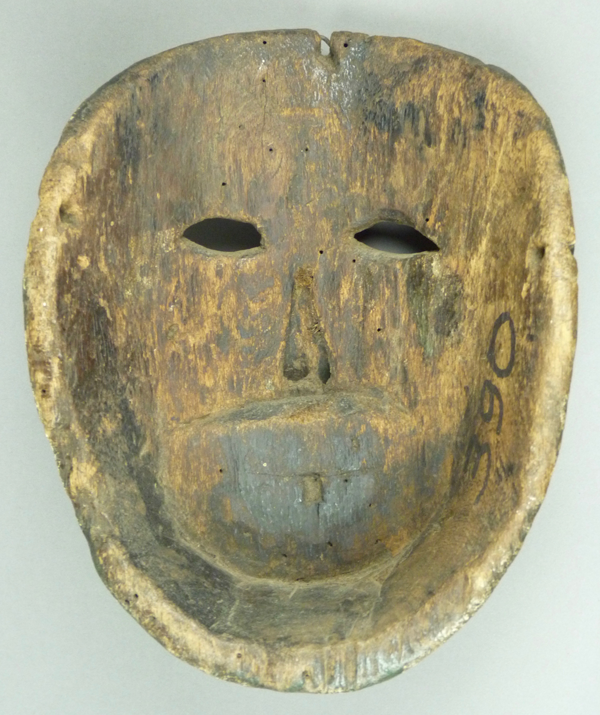As you may recall, in recent weeks I have rooted out a number of attractive masks from the part of the Huasteca that lies in the Mexican states of Hidalgo and Vercruz. These masks are certainly interesting for themselves, but more interesting in clusters of similar or related styles or dances. So I have been grouping them as I can. Today’s assortment is admittedly a somewhat heterogeneous group.
The first of these is a mask that depicts a Pajaro Real (a peacock). In my June 6 post I had included a related mask, a Pito Real (Green Woodpecker) from Carpinteros. Today’s mask, which is probably not from Carpinteros, looks quite different from that one. In Mascaras, the book by Estela Ogazon (with the assistance of Jaled Muyaes, behind the scenes) that accompanied a mask show at the Universidad Nacional Autonoma de Mexico (UNAM) in 1981, mask #13 is another Pajaro Real mask, but that one has a leather face with an applied wooden nose. Unfortunately that book says nothing about the dance. If you compare the two examples, what they have in common is a dramatically phallic nose. Here is the one from my collection, which was found in “the Huasteca.” I got it from Robin and Barbara Cleaver in 1988, but I know that it was originally collected by Jaled and Estela.
The nose is nailed to the wooden face of the mask. This is difficult to see, but the relief carved edges of the sideburns swing over the eyes to the edges of the nose (or bill), while the hairline continues as a painted feature. The chin has an ambiguous color because the paint there is layered—translucent black over the turquoise. The mask in the Mascaras book is of natural leather and with an unpainted wooden nose. Each of these masks has a similar mustache, but the leather mask doesn’t appear to have a beard.
The Peacock mask is 8 inches tall, 5½ inches wide, and 5 inches from the back edge to the tip of the nose.
You can see that this mask was heavily danced.
The second mask is a spooky looking yellow dog Xantolo mask that I had overlooked when I was preparing my Animal Xantolo posts of 12/21 and 12/28/2015 and January 4, 2016. It was collected by Jaled Muyaes and Estela Ogazon in Jaltocan, Hidalgo and I bought it from them in 1998. This mask obviously depicts a specter, a dog whose flesh has an unnatural color to cue us that it is no longer alive. I had discussed such masks in my November 23, 2015 post —”The Color of Death.”
He wants to be your friend!
Look at this expression. The mask is 9½ inches tall, 5 inches wide, and 5½ inches deep.
This is an old mask.
The third mask in this series is a gigantic yellow pig that was danced in Carnaval. I bought this mask from Robin and Barbara Cleaver in 1989. At that time it was over-painted with black water color paint, but I could see the yellow enamel underneath, so I washed off the black to expose this magnificent appearance. There was a flap at the top which was constructed from a recycled cardboard box; that too was painted with the black water paint.
The pig measures 12 inches from the back edge to the tip of the nose. The round end of the nose is 4½ inches in diameter. The top of the head is 7 inches wide.
The face of this pig was carved with great flair.
It is not easy to assess the degree of wear from these photos. What one sees with the mask in one’s hands is that the yellow paint around the inside of the rim has been worn away and that surface is also soiled from use, as if this mask had been used for perhaps 10 years or more.
The ears were made from recycled shoe leather. The back and the front were all painted at the same time.
The fourth mask, which has a droll and clown-like face, was collected in Huayacocotla by Jaled Muyaes and Estela Ogazon. It does not not appear to be by the hand of Modesto Sanchez, but it is very cleverly carved and I find it enchanting. I bought this mask from Jaled in February 2005 and he died in 2007.
There are four fangs in this mouthful of teeth. The manner of painting of the face is unusual, but strangely effective. I have never felt certain about what being is meant to be depicted by this mask; maybe it is a Chango (monkey).
This mask is 7 inches tall, 7 inches wide, and 4 inches deep.
The grooved carving that was used to hollow the area of the eyes and the nose cavity is very attractive, even though it is on a part of the mask that is not meant to be seen. The hollowing around the back of the eyes mirrors similar hollowing on the front! One often sees such attention to non-visible details in the work of great craftsmen; they feel compelled to carve every aspect with care. This is yet another mask with a number on the back that links it to the 1981 UNAM mask show. Ironically, at the time that I bought these masks I did not know the significance of the numbers; Jaled explained it to me years later.
The fifth mask, another masterpiece from the Huasteca, was collected in El Eden, a town in the Municipio (county) of Tuxpan, Veracruz. I tell you this because El Eden doesn’t seem to be shown on any map, but at least Tuxpan is easily found, and clearly within the Huasteca. This mask, with its haunting expression, was said to be from the Danza de los Matachines. I have told a little about this dance in earlier posts. Briefly, the Matachines dance was apparently imported by Spanish missionaries from an Italian model; in New Spain (subsequently Mexico and the Southwestern United States) it became a vehicle for local elaboration, purposes, and invention. Usually the dancers are not masked, but there are communities, such as in the Huasteca, where the Matachines do wear masks. So delicately carved, this is one of the nicest Matachines masks that I have ever seen. I purchased this mask from the Craft and Folk Museum in Los Angeles, California in 1995; a collector had donated the mask to help raise funds to maintain this institution. It was a very nice museum, but sadly it did later close.
One can see the original paint on the right eye (to the viewer’s left), while the left eye was covered with foil from a cigarette package, creating a very different appearance. I particularly admire the elegant design of the carved arches that frame the vision slits. I also like the delicacy of the mouth. There is a sharp chin that is not easy to appreciate in these photos.
This mask is 7½ inches tall, 6½ inches wide, and 5 inches long, from the back edge to the tip of the nose.
The back of this mask demonstrates very clearly a style of patination that I call “differential wear.” The patina is far from uniform; rather, the areas with the greatest contact with the dancer’s skin are the most darkly stained.
The 6th mask may be another Matachine from the Huasteca, even though the writing on the back makes a different claim, stating that this is a Matlachine (a synonym for Tejonero) mask from a small town near El Espinal, Veracruz (in the Totonacapan/ Sierra de Puebla). As in this case, masks migrate to adjacent areas from their places of origin, then they are adapted for use there, but yet they don’t match the masks of that region. For example, the manner of carving and painting the eyes is typical of more Northern areas in the state of Puebla, and the expression of the mouth looks quite similar to that on the last mask. Obviously they are not by the same hand. Jaled and Estela collected this in the field, perhaps from a runner (picker), and I bought it from them in 1999.
The thing that I particularly like about this mask is the name “Kaliman” that a dancer painted across the forehead, apparently to use this mask during Carnaval. Kaliman is the name of a caped crusader, on the order of Batman™, but he is a Mexican character, who was extremely popular there in the mid-20th century. The dancer apparently wished to identify with the strength and fame of this personage.
This mask is 7 inches tall, 6 inches wide, and 3¾ inches deep.
This mask is old, worn, and battered. You may have noticed the hole in the left cheek, to the left of the mouth in this view.
I obtained this last mask from Jaled Muyaes and Estela Ogazon in 1997, accompanied by weak provenance—”Carnaval, Veracruz.” Judging from his appearance, and particularly his olive paint, I would now conclude that this is a Xantolo. The patina on this mask is extreme.
This mask has a handsome face, along with carefully carved teeth that are difficult to see under layers of old paint.
This mask is 9 inches tall, 7 inches wide, and 3 inches deep.
Here is another one of those 1981 UNAM show numbers.The remarkable wear on the back of this mask is impossible to overlook.
Next week I will conclude this series on masks from the Huasteca with a group of Macho Cabrillo masks from the area of El Nante, Hidalgo, an Otomí town in the Hidalgo Huasteca.

